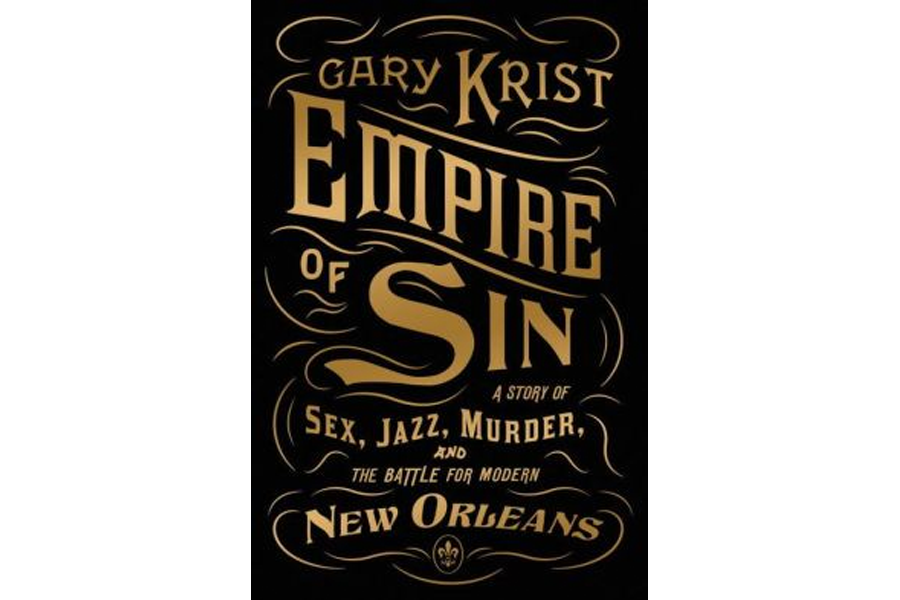The 19th-century battle for the soul of New Orleans
Loading...
Author Gary Krist, American history’s reigning Master of Disaster, has previously uncovered an astonishingly violent period of Chicago history in “City of Scoundrels” and a deadly Northwest avalanche in “The White Cascade.” Now he turns to New Orleans in a riveting new book about the Big Easy’s bloody transition from a tolerant vice-friendly town to an embrace of refinement and racism.
Empire of Sin: A Story of Sex, Jazz, Murder, and the Battle for Modern New Orleans, which focuses on the decades around 1900, is a thrill to read despite its heartbreaking storyline. In an interview, Krist talks about the origins of jazz, the fate of the doomed Storyville red-light district, and the lessons of a morality war with many victims.
Q: How did New Orleans become New Orleans in the first place?
It started out as a French city in the early 1700s and for the first 100 years, it was a little piece of France on the North American continent. But it also had Latin and Caribbean influences and developed more permissive attitudes regarding sex, vice, and race.
It was fundamentally different than the other cities of America. It had a greater recognition of human nature: Sometimes you can’t really change human nature. You have to roll with it rather than confront it.
They had this permissive attitude for much of the 19th century. But when Anglo-American elites came down from the North, they wanted to clean up the town. They thought, "We can’t abide this, or we won’t attract Northern capital." They tried to normalize it compared to the rest of the South.
Q: How did the race conflict evolve after post-Civil War reconstruction?
The local white population realized that their federal overseers were gone and they could start asserting white supremacy.
There’s this cascading wave of legislation that took away whatever rights blacks had in New Orleans. Intermarriage was made illegal and they rewrote the state constitution in 1898 to disenfranchise African-Americans.
Q: What was life like for the mixed-race Creoles in New Orleans?
For a time, they could hold all sorts of jobs. They were cigarmakers, leathermakers, and shoemakers, in guild crafts.
After the institution of Jim Crow laws, the Creoles couldn’t hold these jobs anymore. This had an effect on the development of jazz.
Before, music was considered something that every educated person did, but not professionally. You had a profession and then music you played on the side.
When they lost those jobs, they had to play music professionally. They were pushed in with the African-Americans and former slaves.
The combination of the more classically trained Creoles of color and the more earthy music of African-Americans is what gave birth to jazz.
Q: As all this was going on, the people in charge of New Orleans experimented with a quasi-official red-light district – the infamous Storyville – and then decided to dump it. How’d that play out?
The idea to quarantine vice in Storyville was originally a reformist idea: We’ve got prostitution, and it’s leaking out into these respectable districts. We can’t allow this to happen. So the idea was to make prostitution illegal everywhere in the city except this 18-block area. This will draw all of that activity where it can be avoided by respectable people.
For a while, it worked. Prostitution and gambling did go on, but it had been concentrated in this one area. But then in a few years, it became so successful that the reformers realized they’d created a monster. Far from lowering the profile of prosecution, Storyville was making New Orleans the home of shamelessness.
Q: How did this era affect New Orleans in the long run?
It basically made it a much more ordinary place.
The city was absolutely sui generis in the 19th century. Now, we think of it as being eccentric, but compared to what it was, it’s much more normal and in line with other cities. They tried to put it more in line with Southern racial attitudes and clean it up and to a certain extent, they succeeded.
But while they wanted to attract capital and become an industrial giant, that never happened. The economy suffered for decades. It was rescued a bit by the oil industry in the Gulf, then they realized they could take advantage of this whole reputation as a center of sin and attract tourists. The bad reputation eventually helped the economy.
Q: What are some of the bigger lessons from New Orleans?
The best intentions do not always pan out the way you think they’re going to. That’s not only a theme in this book but also in the Chicago book.
There’s a notion that you can micromanage a society. The Progressives were big on having a super-competent expert as the head of a city and approach it like a business. But a city is not a business. There shouldn’t be '"I think I know how to solve this problem" thinking. There has to a flexible policy because cities are nothing if not surprising.
Randy Dotinga, a Monitor contributor, is president of the American Society of Journalists and Authors.





